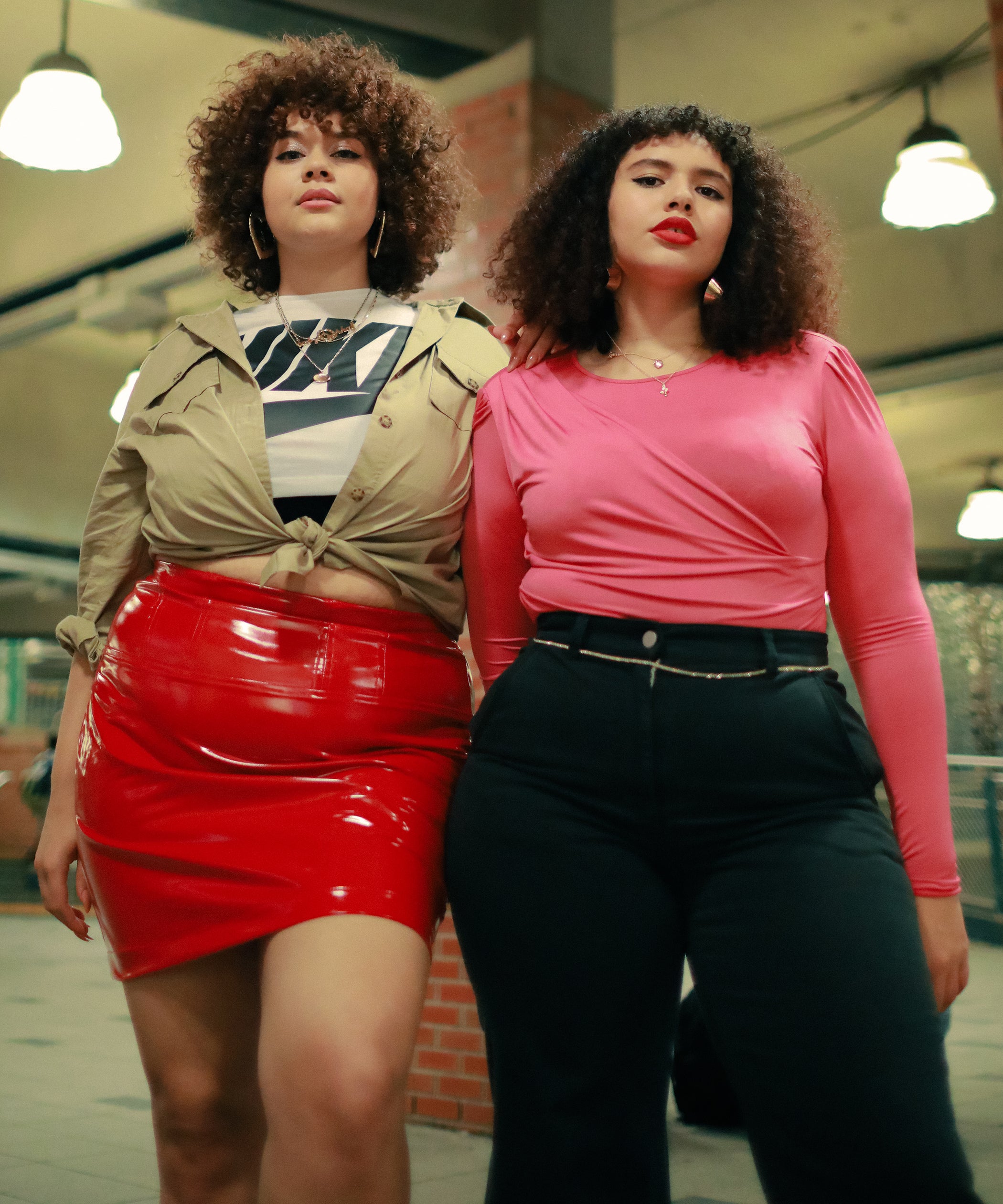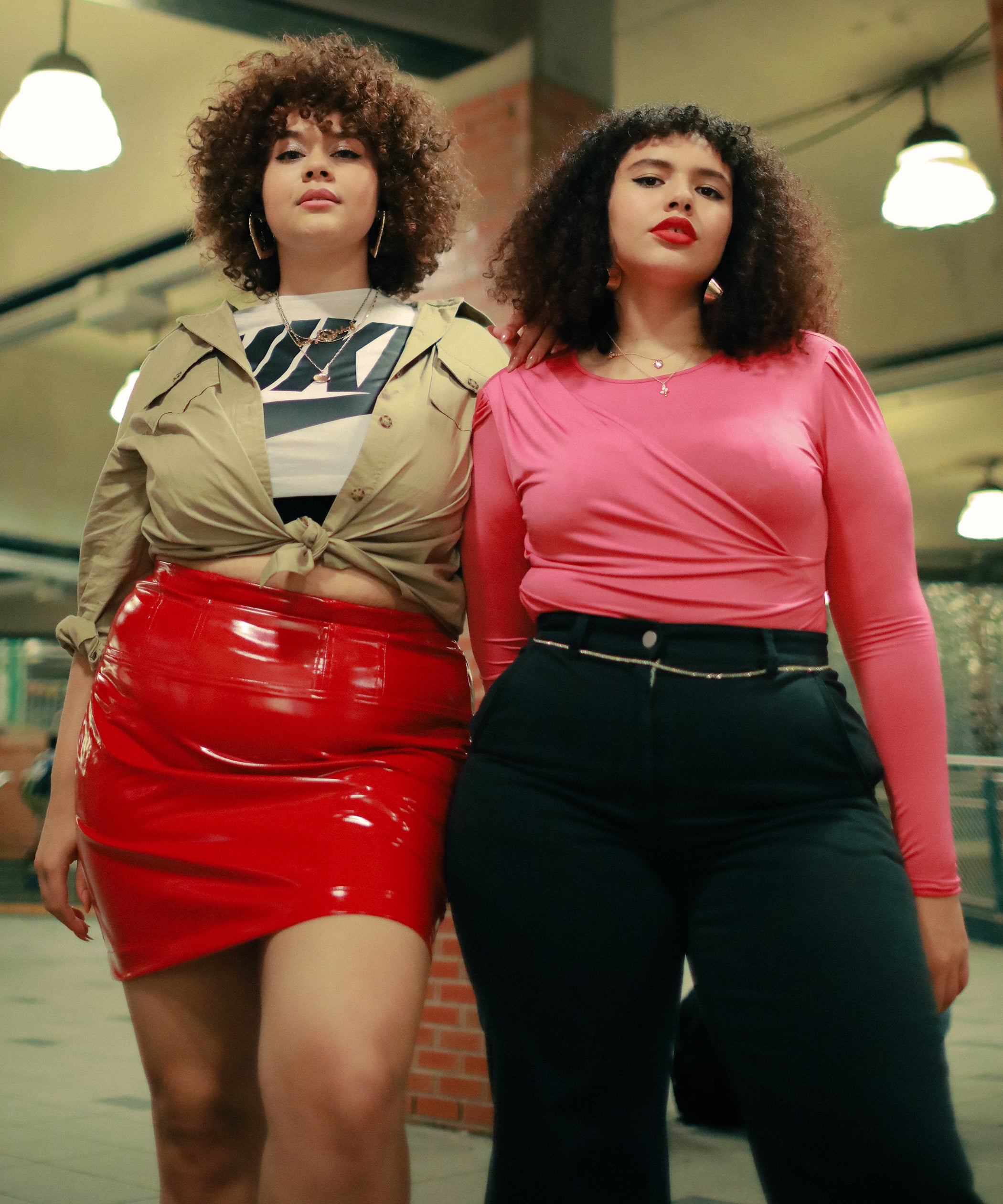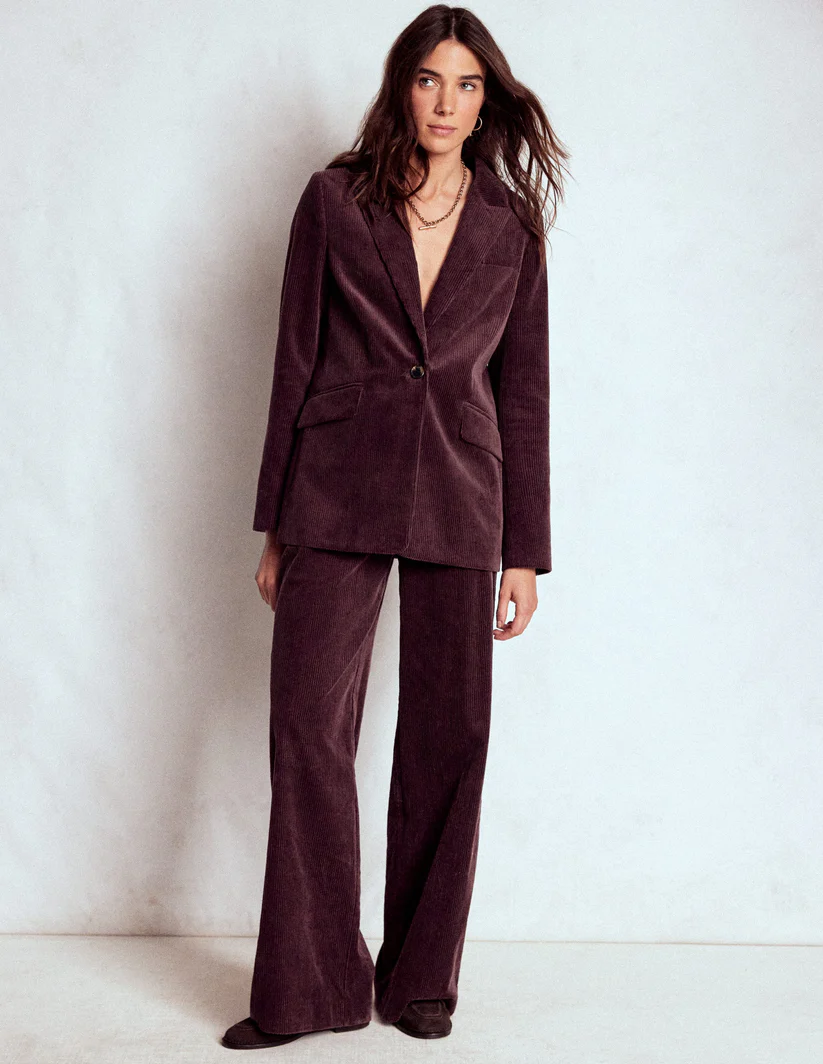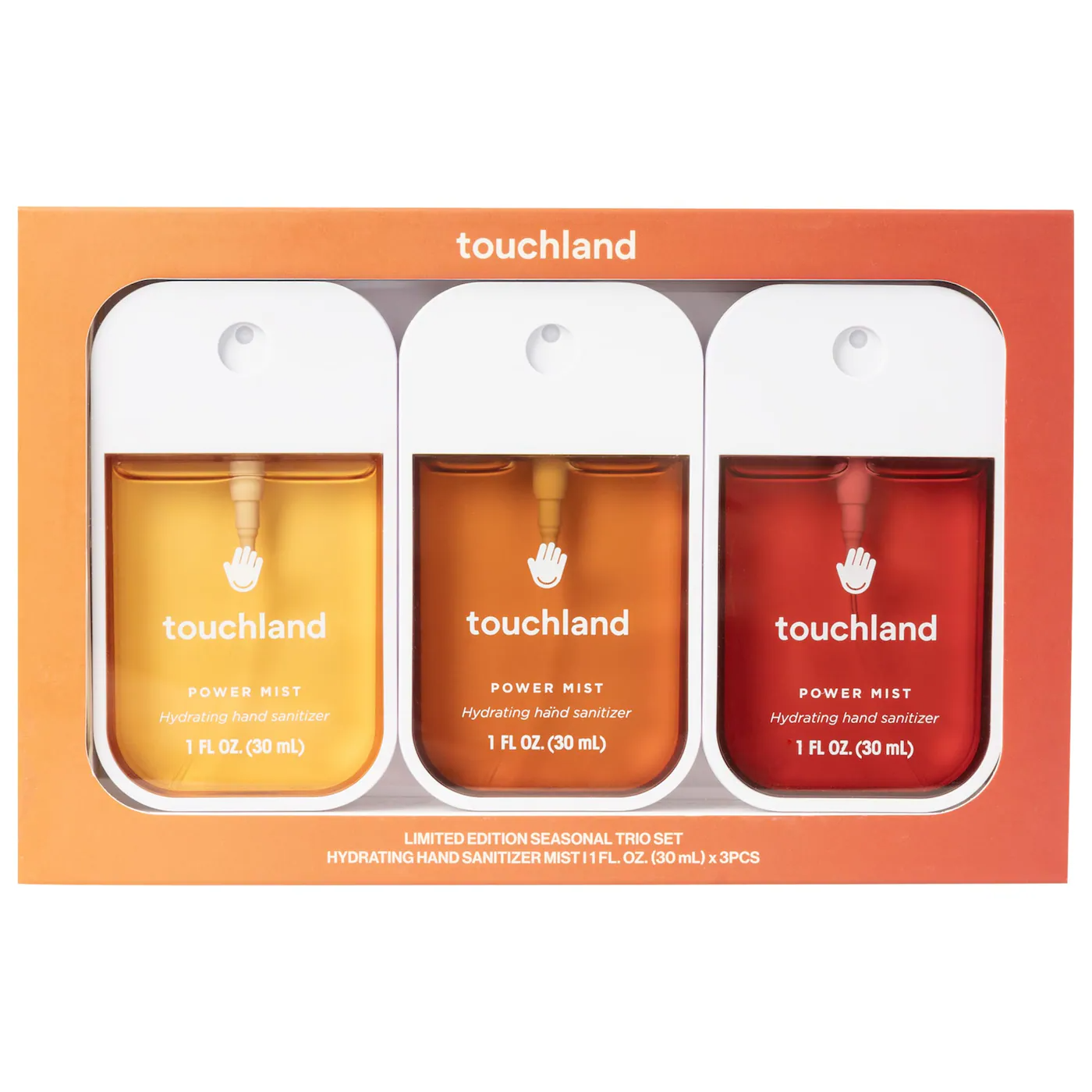

If you were a statistician tracking the growth of the size-inclusive fashion market, you could point to a number of data points that say that shopping as a plus-size person is easier and more accessible than it was even a decade ago. On the surface, that’s true: In the last 10 years, shoppers have seen an exponential improvement when it comes to retailers offering a size 16 and up and more affordable prices, particularly when it comes to fast fashion. (There are more niche options from smaller, independent brands than ever before, too — eveningwear, workwear, luxury, athleisure.) We’ve come a long way, sure, but, while there are plenty of plus-size fast-fashion brands available today, it is much harder to find sustainable size-inclusive labels.
There is plenty of information out there that points to just how harmful fast fashion can be, both for the garment workers making the clothing and for the environment; there seem to be even more anti-fast fashion brands and campaigns to remind us of this fact, too. With more consumers educated on the topic, it’s not uncommon for influencers and celebrities to be criticized or shamed for shopping or promoting fast fashion. And while we should all be working to minimize our carbon footprint, is the generalized message that says we “all” should be shopping from sustainable retailers fair if over 60% of women aren’t included in the size charts of the movement?
To start, consider the number of options available. Ethical and slow fashion is a smaller market to begin with, which automatically means there are going to be even fewer plus-size options when compared to straight-size ones. As with the rest of the market, though, when you expand your search to ethical fashion brands that offer above a size 22 or 24, you’re left with options you can likely count on both of your hands. This is before the price factor and the style preference even factors in.
Marielle Elizabeth — a writer, photographer, and expert who has been working in the intersection of ethical and plus-size fashion for years — thinks that plus-size shoppers shouldn’t be held to the same standards as straight-size consumers when an actual, wide-ranging variety of styles in size-inclusive fashion has only existed for a small fraction of time. In particular, for someone who’s a size 26 and up, being able to shop at more than one or two stores has really only been an option in the last five years or so. “Plus-size people, regardless of whether we’re talking about ethical fashion or fast fashion, have really only been able to buy pieces in their size with any level of trendiness — and even that feels tenuous as a plus-sized person — in the last few years,” she tells Refinery29. “[Many] plus-size people are still figuring out their sense of style and how they want to dress themselves.”
To then shame plus-size consumers for buying from a retailer that’s finally catering to their style needs may miss an important level of nuance. Particularly when considering the fact that existing in a fat body means experiencing marginalization in a much broader sense than just shopping. “It is extremely well-documented that fat people are paid less, that they’re given less professional opportunities,” Elizabeth shares. “And so all of those things compound in a way that makes it, in my opinion, much harder for plus-size people to confidently spend the amount of money that ethical fashion costs.”
It’s true: While the word “ethical” when it comes to fashion has blurred to the point of becoming a buzzword, it most often refers to brands that have a traceable supply chain in which every person involved in making a garment is provided with safe working conditions and paid a living wage. This means that ethical fashion often costs much more than fast fashion, which underpays workers, among other corner-cutting, questionable practices. Simply put, sustainable fashion costs more money, which can be a significant barrier to entry for folks in marginalized communities. You can, of course, buy clothing secondhand — which is not only more affordable but also keeps fashion from ever entering the landfill — but that sometimes poses its own sizing limitations.
Fat people are paid less, they’re given less professional opportunities… it’s much harder for plus-size people to confidently spend the amount of money that ethical fashion costs.
Gianluca Russo, a plus-size fashion expert and author of the upcoming book The Power Of Plus, says that he has mixed feelings about tagging fast-fashion brands on social media. “As someone in the plus-size fashion space, it’s nerve-racking to tag the brands I’m wearing on Instagram when I know that a majority of them are fast fashion. But the truth is this: That’s all I have,” he shares. “As a plus-size man, my options for clothing are abysmal.”
Though Russo is conflicted about sharing the brand names, he notes that, for him, it’s better than the alternative, which would be to not provide a resource for members of his community: “If we stay silent about the limited options we are finding, then we’re doing a disservice to those who look to us for inspiration and guidance.” It also supports the notion that the impetus for change should be on the consumer, rather the brands themselves or government officials who should be regulating the industry.
Until regulations are in place, Elizabeth says her goal is to figure out how to include more people in the movement, rather than alienate them. “For me, the question with ethical and sustainable fashion always comes back to how are we making it more accessible and how are we making it so more people want to participate, not how are we making this a competition of who is the most ethical, because both of those things often loop back to financial privilege,” she says. “I think that vilifying influencers that are helping people feel better about their bodies and helping people feel more confident in whatever clothing they choose to wear and whatever means they have to buy that clothing is not a way to sell people on ethical and sustainable fashion.”
What’s more, as she points out, consuming consciously doesn’t have to be an all-or-nothing experience until you can afford to buy sustainably all the time. It can be a small change, or a gradual shift, like swapping a few fast fashion purchases a year for a single, high-quality piece that will last a long time. As Elizabeth says, even something as small as changing how you wash your clothes or committing to repairing clothing instead of tossing and replacing it can make a positive impact environmentally.
“We keep trying to get people functioning at 100% instead of just trying to get everyone participating at like 10%,” Elizabeth notes. “And I think about that a lot when it comes to the work I do working with the intersections between plus-size fashion and ethical fashion: How do I get someone that’s never bought an ethical garment ever before to buy one single ethical garment?” An even easier first step: Following creators like Elizabeth, who share slow-fashion brands and resources regularly (check out her Patreon, too). Because, yes, size-inclusive brands do exist.
As someone in the plus-size fashion space, it’s nerve-racking to tag the brands I’m wearing on Instagram when I know that a majority of them are fast fashion. But the truth is this: That’s all I have.
Do more anti-fast fashion brands who claim to be ethical need to expand their size ranges? Yes. Still, even if every slow-fashion brand did offer plus sizes, the fact remains that most plus-size shoppers have a very different experience with style and clothing than straight-size shoppers have — and as long as fat bias and discrimination exist, this will remain the case. This concept goes beyond just plus-size customers, too.
As Elizabeth says, “I think collectively the goal should always be to consume less and make better purchases, but I think the way in which we view ethical, sustainable, and slow fashion needs to hold space for people that have different barriers that they’re facing, whether that be size, whether that be gender, whether that be disability, whether that be race.”
Maybe, one day, the fashion industry will reflect on these differences, and real change will occur for all.
Like what you see? How about some more R29 goodness, right here?
25 Plus-Size Shops That Aren’t Fast Fashion




